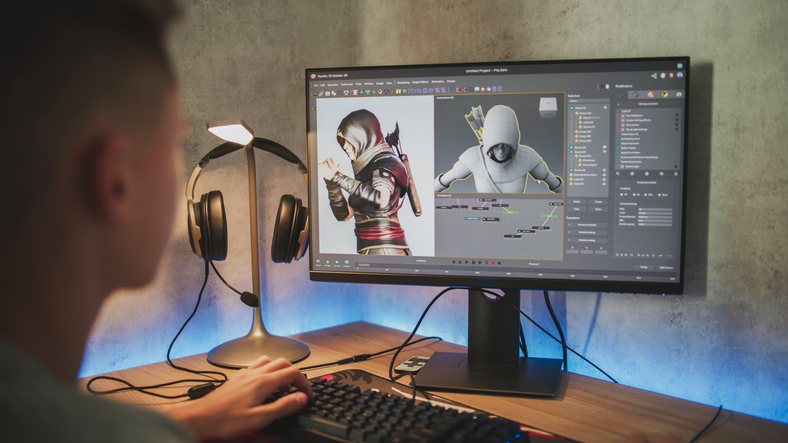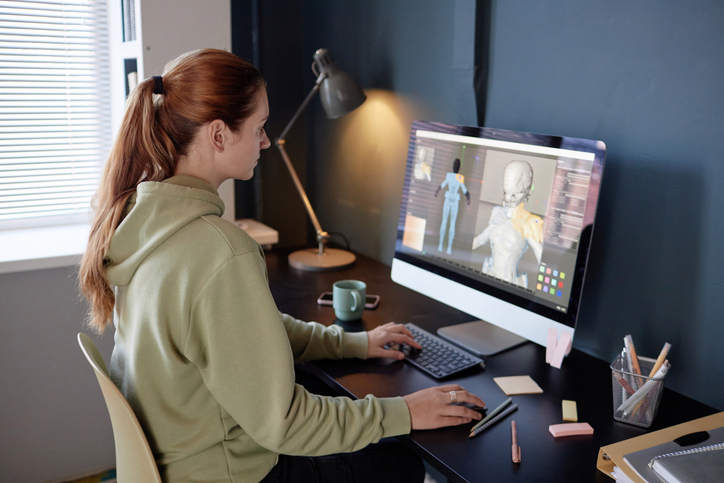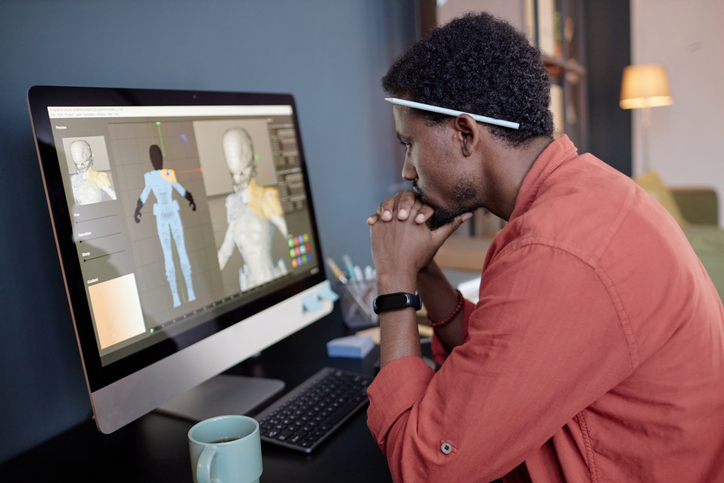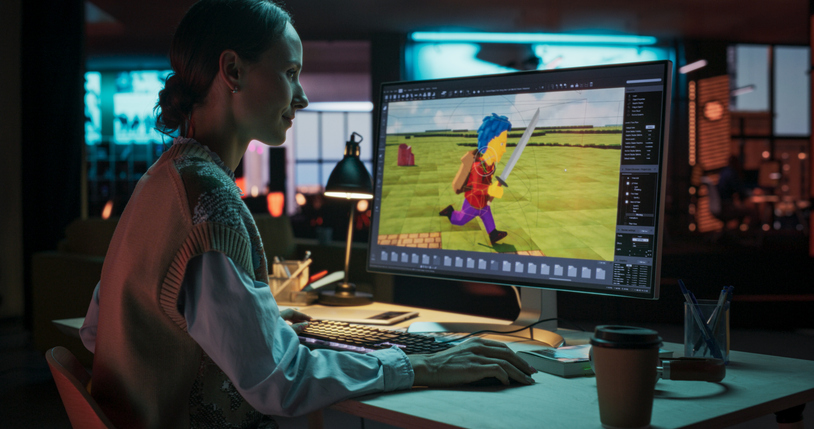3D animation is a fascinating and rapidly growing field that blends artistic creativity with technical expertise. Whether you’re passionate about bringing characters to life, designing breathtaking environments, or creating special effects for blockbuster films, learning 3D animation can open doors to many exciting career opportunities.
One of the most common questions aspiring animators ask is: How long does it take to learn 3D animation? The answer isn’t straightforward because learning time depends on various factors, including prior experience, learning methods, and career goals.
In this article, we’ll explore what 3D animation is, the key factors that determine how long it takes to master, and how a structured program such as VCAD’s 3D Modeling Animation Art and Design diploma can help fast-track your learning journey.
What is 3D Animation?
3D animation is the process of creating moving images in a digital three-dimensional space. Unlike traditional 2D animation, which relies on hand-drawn frames played in sequence, 3D animation uses computer-generated imagery (CGI) to build characters, objects, and environments that appear more lifelike, immersive, and dynamic.
At its core, 3D animation involves multiple stages, including:
- Modeling – Creating digital 3D objects, characters, and environments.
- Rigging – Building a skeletal structure for objects and characters to allow movement.
- Animation – Applying motion and expressions to bring objects and characters to life.
- Texturing & Lighting – Adding materials, colors, and lighting effects to enhance realism.
- Rendering – Generating the final visual output for movies, games, or marketing content.
These steps work together to create smooth, realistic, and visually engaging animated sequences used across various industries.
Industries That Rely on 3D Animation
3D animation is a key component in many professional fields, including:
1. Film & Television
3D animation plays a major role in the film industry, from fully animated movies to CGI effects in live-action films. Studios like Pixar, DreamWorks, and Disney use advanced 3D animation techniques to create lifelike characters and breathtaking worlds. Additionally, visual effects (VFX) are heavily used in live-action films, bringing fictional creatures, futuristic cities, and explosive action sequences to life.
Examples:
- Pixar’s Toy Story – One of the first full-length 3D animated movies.
- Marvel’s Avengers – Uses 3D animation for CGI characters like Hulk and Iron Man’s suit.
2. Video Game Development
3D animation is at the heart of the game development and design, enabling realistic character movements, fluid action sequences, and immersive environments. Game developers use software like Unreal Engine, Unity, and Autodesk Maya to create lifelike animations that respond dynamically to player actions.
Examples:
- The Legend of Zelda: Breath of the Wild – Features realistic physics-based 3D animation.
- Call of Duty – Uses motion capture to animate characters realistically.
3. Advertising & Marketing
Businesses and advertisers use 3D motion graphics and animated product visuals to engage audiences. From animated commercials to 3D product visualizations, animation helps enhance brand storytelling and user engagement.
Examples:
- 3D animated car commercials that showcase vehicle features dynamically.
- Motion graphics are used in digital billboards and social media ads.
4. Architecture & Industrial Design
3D animation is essential in architecture and design, allowing designers to visualize concepts in a realistic 3D space before construction or manufacturing begins. Architects use 3D animation to create detailed building walkthroughs, while industrial designers use it for product prototyping.
Examples:
- Architectural firms using 3D-rendered walkthroughs of future buildings.
- Auto manufacturers creating 3D-animated previews of new car models.
Skills Needed to Become a 3D Animator
To succeed in 3D animation, animators need a mix of technical and artistic skills:
Technical Skills:
Mastering 3D Animation Software – Learning tools like Maya, Unreal Engine, Blender, and ZBrush to create and animate models.
Understanding Motion & Rigging – Applying physics-based movements to characters and objects.
Rendering & Compositing – Finalizing animations using rendering engines like Arnold or Redshift.
Artistic Skills:
Storytelling & Creativity – Bringing emotions and narratives into animations.
Character Design & Expressions – Making characters feel lifelike and engaging.
Cinematography in Animation – Understanding shot composition, camera movements, and lighting.
Mastering both technical and artistic aspects of 3D animation takes time, but with the right training like VCAD’s 3D Modeling Animation Art and design.
Factors That Determine How Long It Takes to Learn 3D Animation
The time required to learn 3D animation varies for each person. Several factors influence how quickly you can grasp the necessary skills:
1. Prior Experience
If you have a background in digital art, animation, or design, you may find learning 3D animation easier. Those with experience in graphic design, illustration, or video editing might already be familiar with some fundamental animation concepts, reducing the time needed to learn.
2. Learning Path: Self-Taught vs. Structured Education
Self-Taught Learners: Learning 3D animation on your own can be time-consuming, requiring extensive research and trial-and-error. Without structured guidance, it may take 2-3 years or longer to become proficient.
Formal Education: A 3D modeling animation art and design diploma program, like the one offered by VCAD, provides a structured curriculum, industry-standard software training, and hands-on projects, helping students gain the necessary skills in less than two years.
3. Time Commitment
How many hours you dedicate to learning impacts how long it takes to master 3D animation. A full-time student might complete training in 12-18 months, while part-time learners could take several years.
4. Technical Skills
Mastering 3D animation requires learning software such as:
- Autodesk Maya – Industry-standard for character animation and modeling.
- Unreal Engine – Used for real-time animation and game development.
- ZBrush – Digital sculpting tool for character design.
- Substance Painter – Texturing and material creation.
Becoming comfortable with these tools takes time, but a structured 3D animation course can help streamline the process.
5. Artistic and Storytelling Skills
Beyond software proficiency, animators must understand: in general
- Animation principles – Squash and stretch, anticipation, timing, etc.
- Character movement – Creating realistic and expressive animations.
- Storyboarding – Planning animations effectively.
Developing these skills requires consistent practice and critique, making it crucial to have access to mentors and feedback.
Learning Timeline: How Long Does It Really Take?
The time required to learn 3D animation varies, but here’s a general breakdown:
Beginner Level (3-6 Months)
- Learning animation software basics (Maya, Blender, Unreal Engine).
- Understanding fundamental animation principles.
- Creating simple character movements and 3D models.
Intermediate Level (6 Months - 1 Year)
- Refining animation techniques (rigging, lighting, texturing).
- Creating short animation projects.
- Building a small portfolio.
Professional Level (1-3 Years or a Structured Diploma Program)
- Mastering advanced animation techniques.
- Producing professional-quality animations.
- Developing a polished portfolio for job applications.
VCAD’s 3D Modeling Animation Art and Design diploma helps students reach professional-level skills in a structured timeframe, preparing them for careers in animation.
Why a Structured Program Like VCAD Can Help You Learn Faster
Choosing a 3D animation diploma program like VCAD’s 3D Modeling Animation Art and Design diploma offers several advantages over self-learning:
1. Hands-On Training with Industry Experts
Learn directly from experienced animators who provide valuable feedback and mentorship.
2. Industry-Standard Software Training
Master Maya, Unreal Engine, ZBrush, and more—all essential tools for a successful 3D modeling and animation career.
3. Portfolio Development
Work on real-world projects to build a professional demo reel, a crucial requirement for securing jobs in animation.
4. Career Support & Networking Opportunities
Gain access to job placements, networking events, and industry connections to kickstart your career.
5. Faster Learning Path
Unlike self-taught methods that can take years, VCAD’s structured curriculum helps students become job-ready in under two years.
Career Opportunities After Learning 3D Animation
After completing a 3D animation course, you can pursue exciting careers such as:
Industries That Hire 3D Animators:
- Animation & Film Studios – Pixar, Disney, DreamWorks.
- Game Development Companies – Ubisoft, EA, Rockstar Games.
- VFX & Post-Production Studios – Special effects for movies and TV.
- Marketing & Advertising Agencies – Motion graphics and branding animations.
Job Roles in 3D Animation:
- 3D Character Animator – Bringing digital characters to life.
- 3D Modeler – Creating environments, props, and characters.
- VFX Artist – Designing special effects for films and games.
- Game Animator – Developing animations for video games.
With VCAD’s 3D Animation program, students gain the necessary skills and portfolio to compete in these industries.
Get Started with 3D Animation Today With VCAD
If you’re serious about pursuing a 3D modeling and animation career, enrolling in a structured animation diploma program is the fastest way to gain the skills and industry connections needed for success.
VCAD’s 3D Modeling Animation Art and Design diploma provides:
- Expert-led training in 3D animation, modeling, and design.
- Industry-standard software training (Maya, Unreal Engine, ZBrush, etc.).
- Portfolio-building projects to showcase your talent to employers.
- Career support to help you land your dream job in animation.
Start your journey today! Learn more about VCAD’s 3D Modeling Animation Art and Design diploma and apply now.
Final Thoughts
So, how long does it take to learn 3D animation? It depends on your experience, learning method, and dedication. While self-learning can take years, enrolling in a structured program like VCAD’s 3D Modeling Animation Art and Design diploma can fast-track your progress, helping you become job-ready in under two years.
If you’re passionate about animation and ready to start your 3D animation course, VCAD can help turn your dreams into reality.
Apply today and take the first step toward an exciting career in 3D animation!














